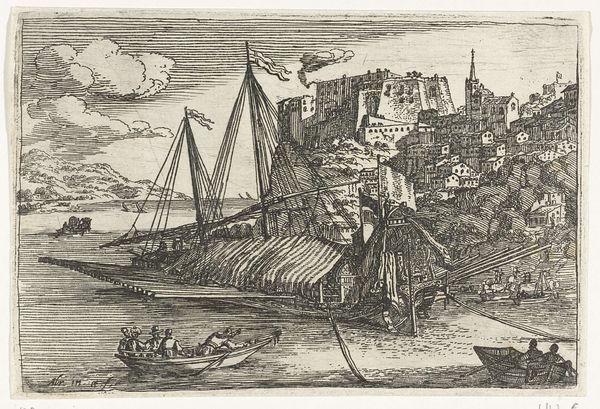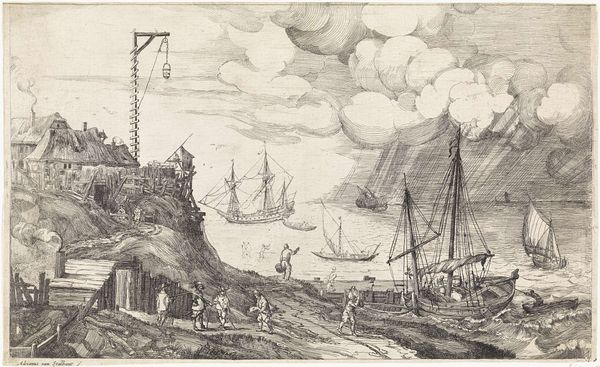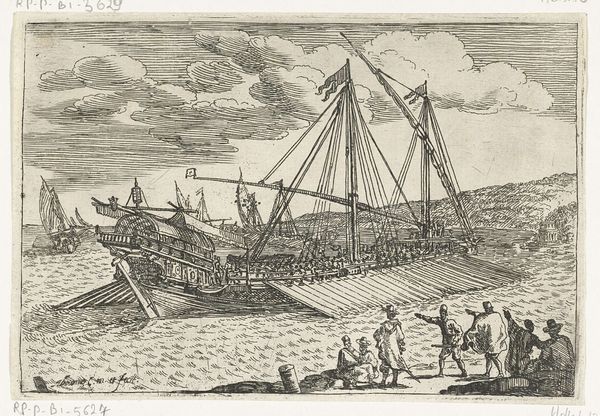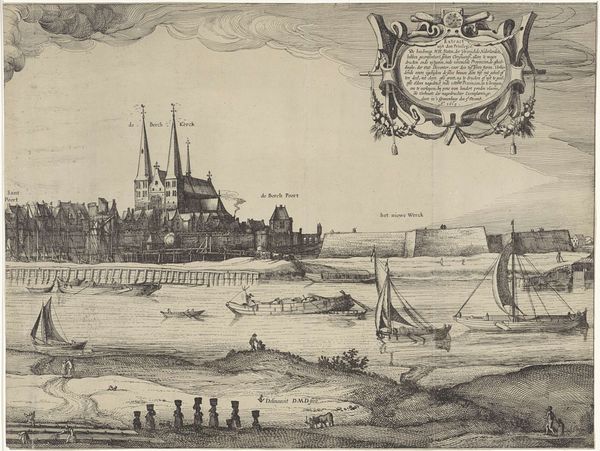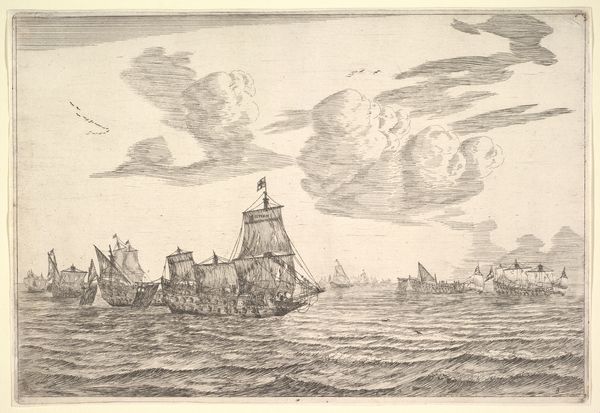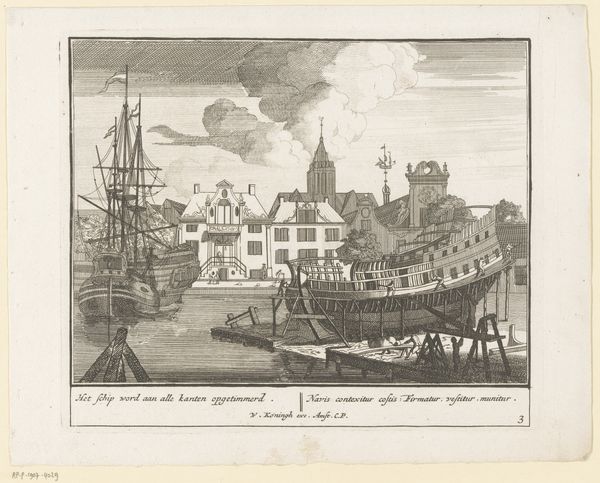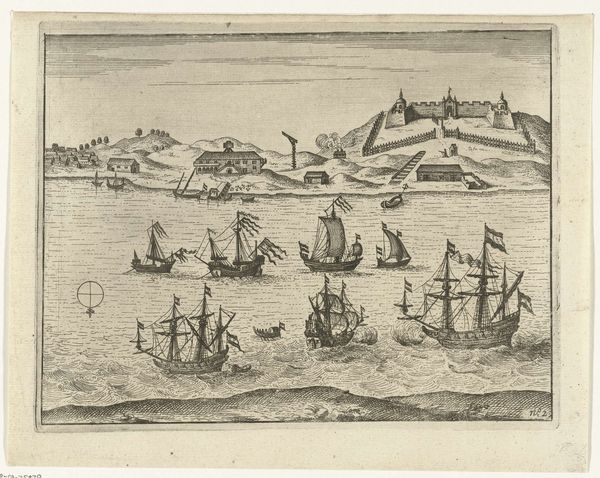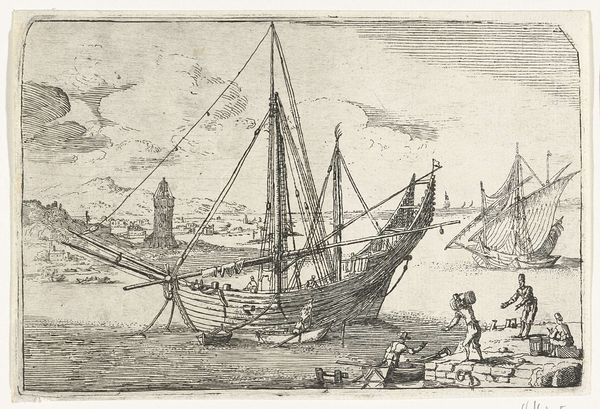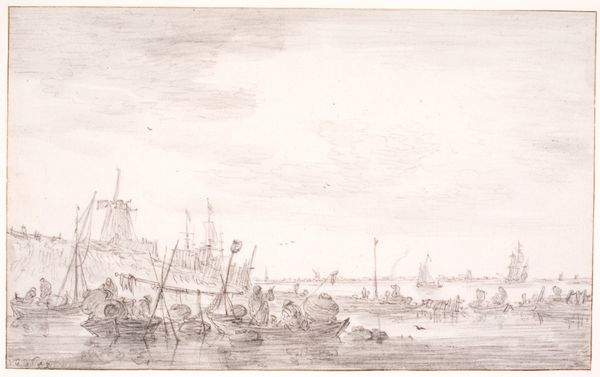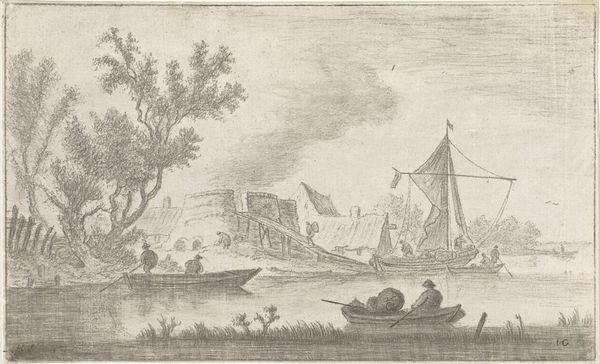
The Castel Sant'Angelo and the Pont Sant'Angelo in Rome, various boats unloading to right, two pilgrims with children seated to left, from 'Varie figure' 1640 - 1650
0:00
0:00
drawing, print, etching
#
drawing
#
boat
#
baroque
# print
#
etching
#
landscape
#
cityscape
Dimensions: Sheet: 4 1/8 x 6 1/8 in. (10.5 x 15.5 cm)
Copyright: Public Domain
Curator: I'm struck by the delicate intricacy of line in this etching. The composition leads the eye beautifully across the Tiber, culminating in the imposing form of the Castel Sant'Angelo. Editor: This is "The Castel Sant'Angelo and the Pont Sant'Angelo in Rome," an etching by Stefano della Bella, created sometime between 1640 and 1650. It gives us such a vivid glimpse into Rome's urban fabric in the mid-17th century, doesn't it? Curator: Indeed. Della Bella seems less concerned with the glorification of the Roman empire, typical for the Baroque, and more focused on the everyday commerce and movement around the Castel. Note how he uses the architecture not as the sole subject but to emphasize human activity and social order. Editor: Observe, though, how the repetitive vertical lines in the Castel's lower walls provide a rigid structure that is then contrasted against the irregular lines representing the human activity near the docks and, above, against the more abstract pattern suggesting the billowing clouds in the background. I think Della Bella is emphasizing a harmony of seemingly contrary parts. Curator: That is nicely put. Think too about what this structure *meant.* Originally Hadrian's mausoleum, it had long been repurposed by the papacy, who were trying to maintain control, both literally and figuratively, of the city, particularly against rising urban violence and foreign invasion. Della Bella presents the city at its most vulnerable: by the river, dependent on these vulnerable modes of transport. Editor: While that vulnerability might be present, note also the sheer number of figures involved in all manner of commercial industry along the banks of the Tiber, connected so well to the Castel by the bridge in the midground. You see the architectural elements, particularly the Castel's structure, working in coordination with human will and engineering, projecting a view of resilience more than one of fragility. Curator: Perhaps it is a combination of the two; Baroque art often holds seemingly opposite forces in a tenuous balance, which itself echoes the tense political and social climate of Europe at the time. Thank you, your point regarding the balance reminds us not to think simply when considering complex artwork. Editor: Of course. What I appreciate most, really, is how Della Bella invites close viewing, and contemplation, regardless of period or political context.
Comments
No comments
Be the first to comment and join the conversation on the ultimate creative platform.

